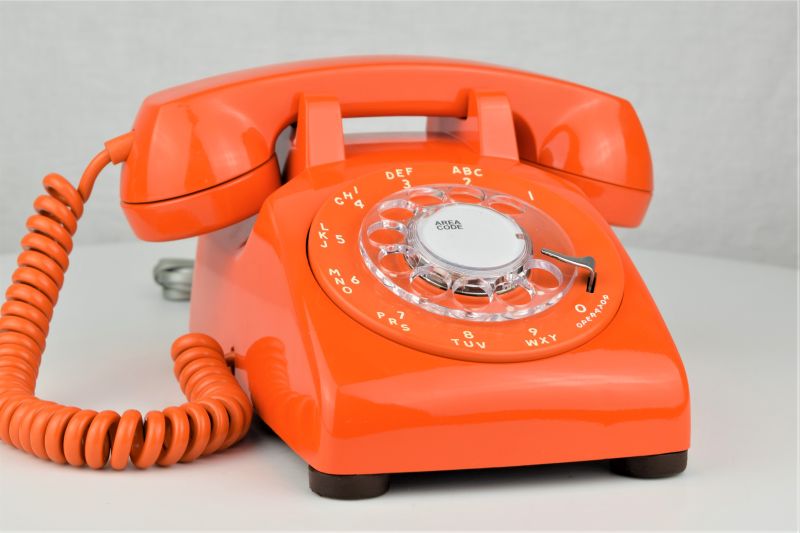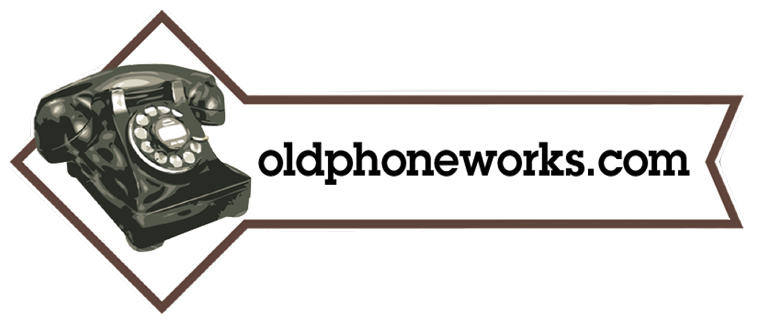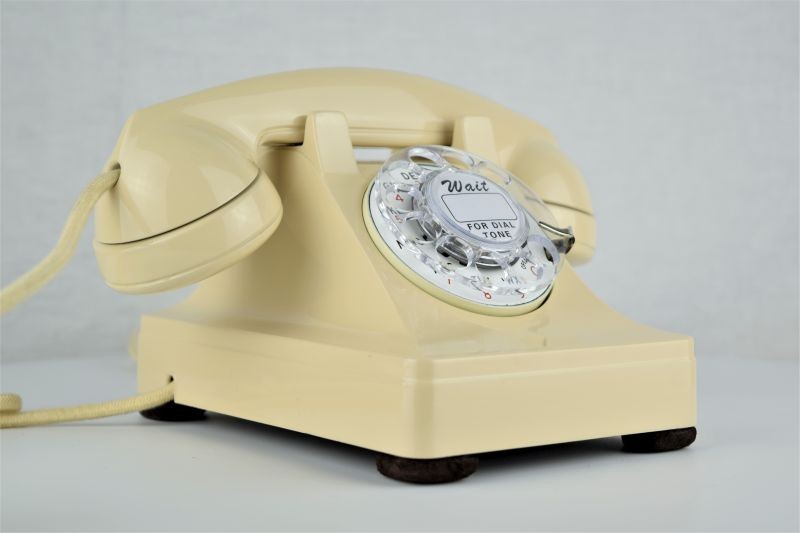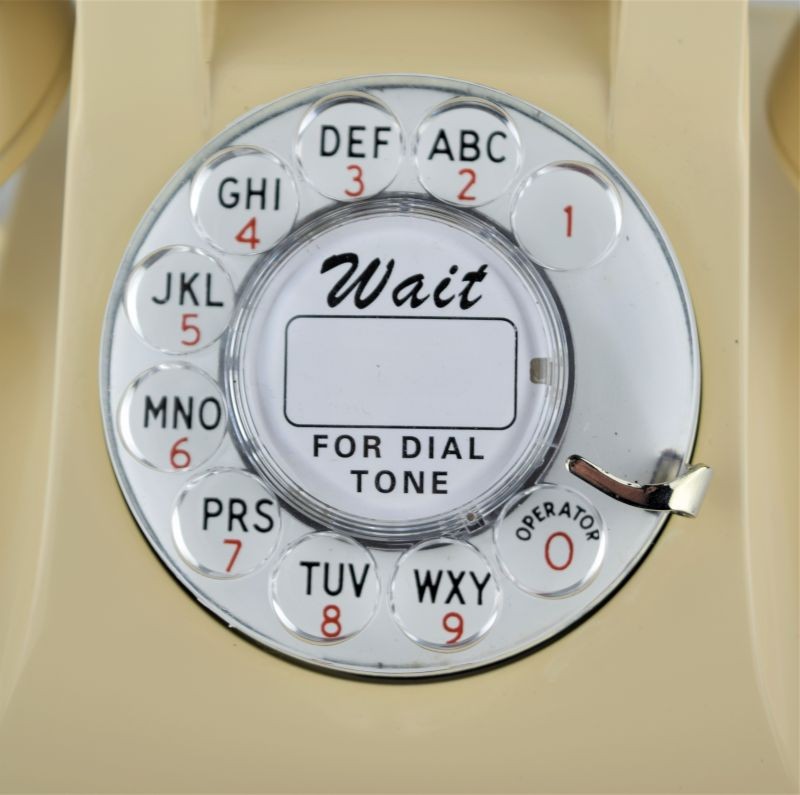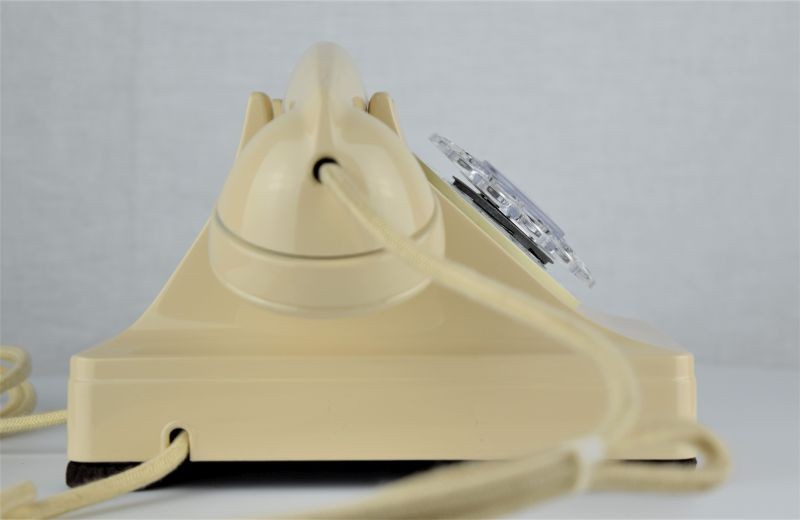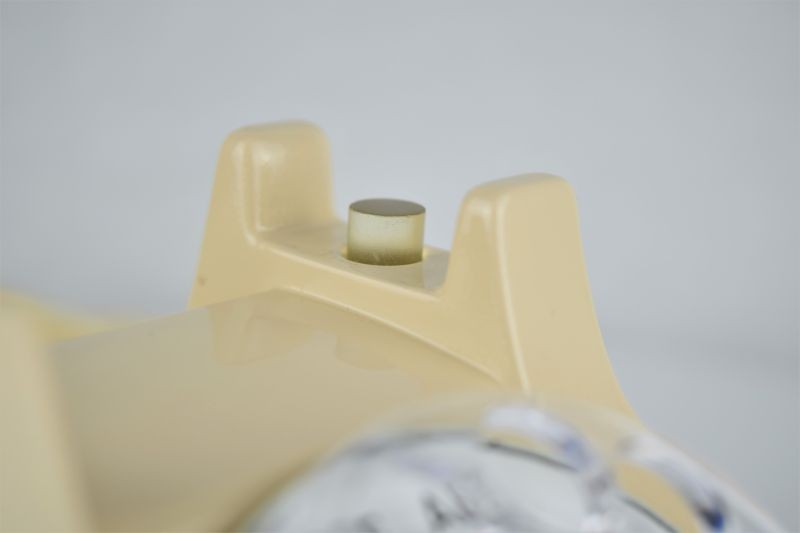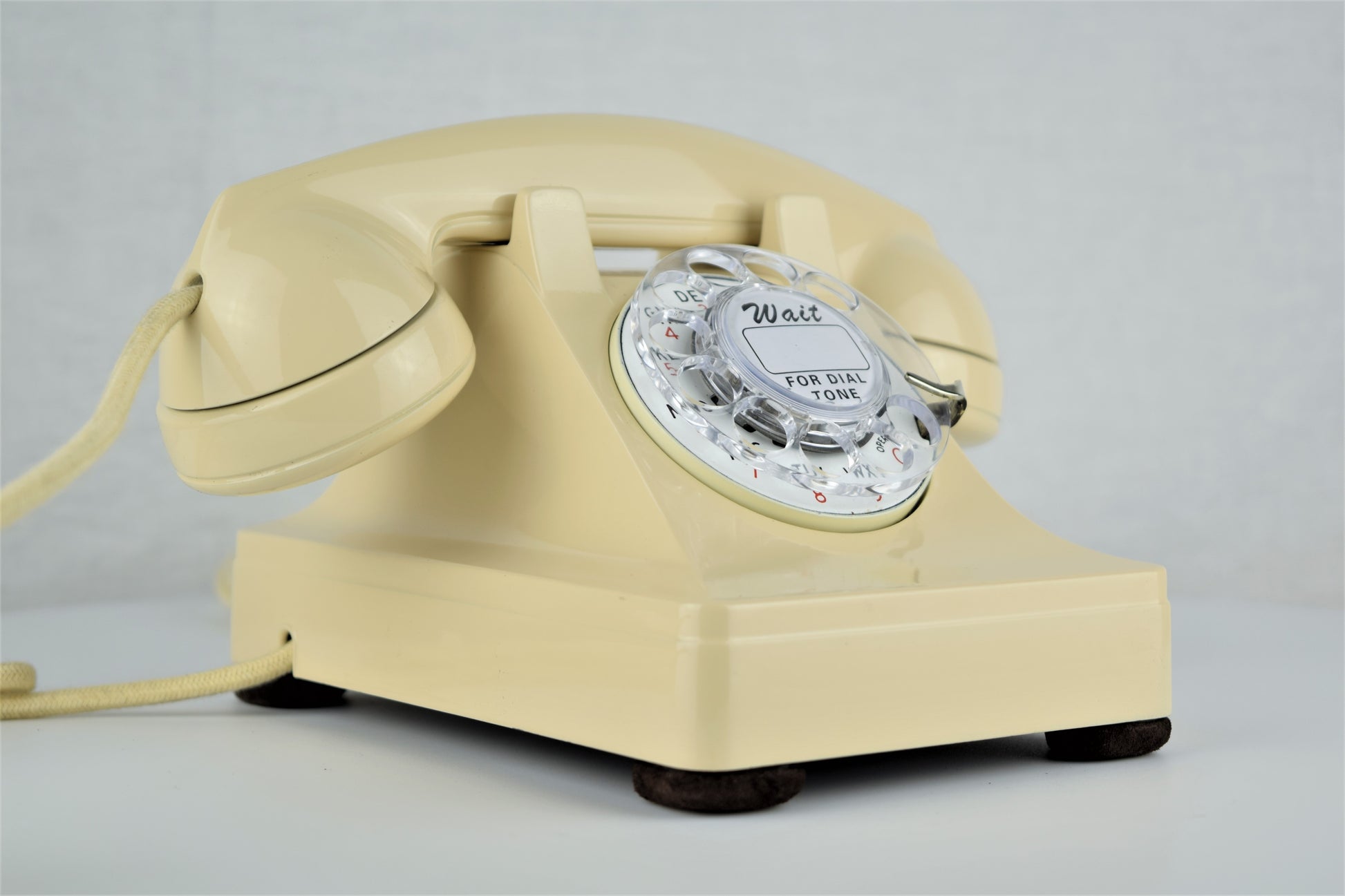Western Electric
21087Western Electric 302 - Ivory
Western Electric 302 - Ivory
Couldn't load pickup availability
Original Western Electric plastic 302, Ivory PAINTED finish
History
This wonderful working example of 1930s design is sure to fit into your period decorating scheme. What I love most about this phone is the great RRRING that will be sure to get the attention of everyone in your household!
The Model 302 desk telephone was introduced in 1937. Created by famed industrial designer Henry Dreyfuss, the first versions had a die-cast zinc housing and were changed during the War to a thermoplastic housing. The 302 series was the first subscriber desk telephone to contain the ringer and induction coil within the phone. Previous desk models required a separate subscriber set or bell box that was attached by a line cord. While the 302 series telephone is predominately found in black, it was also produced in nine colors. When the thermoplastic housings became the standard, the colors were molded in the plastic of that color rather than painted on as was the case of the die-cast phones. The Model 302 was manufactured until 1954 and during it's lifetime it was the workhorse of the phone system.
This is NOT an original Thermoplastic Ivory 302, rather it is an original black thermoplastic 302 re-painted in the Western Electric Ivory. We feel this is an excellent opportunity to complete your 302 collection without breaking the bank.
The Restoration Process
Dial – The dial has been fully disassembled, cleaned, lubed and timed to ensure years of trouble free service. The outer edge of the dial has been stripped and repainted with an ivory enamel. Unless the dial is removed, this is something you will rarely ever even see, but this is how it would have come from the factory. The number plate has been cleaned and a perfectly matching overlay has been applied. We have added a brand new plastic finger wheel and die cut dial card.
Cords – The phone has been outfitted with brand new colour matched ivory cloth covered cords that are made in house on the same type of equipment originally used by the phone companies. They look amazing. The line cord has a modular connection to facilitate a modern connection to your wall jack.
Shell – The shell has been painstakingly put through a multi-step restoration process which includes sanding with 400, 800, 1000, 2000 grit. This ensures that there are no scratches, dents or dings. The shell is then professionally painted in a high gloss ivory using Polane. This is a very durable and scratch resistant paint that will hold up for years. This is the same process the phone companies used to refurbish their own telephones.
Base – The base is completely stripped of all its components and painted with a high gloss black. The components are then cleaned, tested and reinstalled.
Feet – The feet are disassembled and sand blasted. They are then rewrapped with super soft pig skin suede leather to ensure it does not damage the table it proudly sits on.
The phone goes through extensive testing before to ensure it is in perfect working condition prior to shipping.
Dial Options
Number 6 - default - The last technology jump for 3 inch dials. A smooth return and light weight for dialing highlight this choice. It is sturdily built and very reliable.
Number 5 - The predominant dial of the 40's and 50's was replaced by the number 6 for a more universal fit. The number 5 dial features a "whirr" sound upon its return and a good weight for dialing.
Number 4 - This is the first 5 contact, 3 inch dial. The real joy of the dial lies in the highly sought after "clickity-clack" sound that was eliminated with the introduction of the number 5. What was eliminated from customer complaints, is now one of the features that collectors look for most in hunting out the vintage phones.
Do you currently have any rotary phones? If the answer is no, it is always a good idea to call your local phone company and check if they still support “pulse” dialing. If they do, you are all set to go. If they do not, your phone will not be able to place calls without a converter. We have internal converters that we install during assembly available for $79.95.
- Dials * and # from your rotary phone to access computerized services.
- Use legacy equipment on tone-only lines.
- Compatible with VOIP services.
- Provides last number redial functionality.
- Adds 7 programmable speed dial locations
As an alternative, we provide an option to use this phone as an extension of your cell phone. The XLink Bluetooth gateway is an device external to the phone that gets it’s power from a standard AC outlet. The cord from the phone will then connect to a phone jack on the gateway. When you pair the gateway to an active Bluetooth enabled cell phone, you will be able to use the vintage phone just like it was connected to a traditional landline. When someone calls your cell phone, the vintage phone will ring, and you will be able to dial out using the dial on the vintage phone. If you want to be able to call # and * using your rotary dial, you will also need to add the pulse to tone converter option.
We are now also offering the option to have your telephone number printed on the dial card in the center of your fingerwheel. Select this option with the drop down menu, and type in the request in the comments section of the order or email us at Oldphoneguy@Oldphoneworks.com
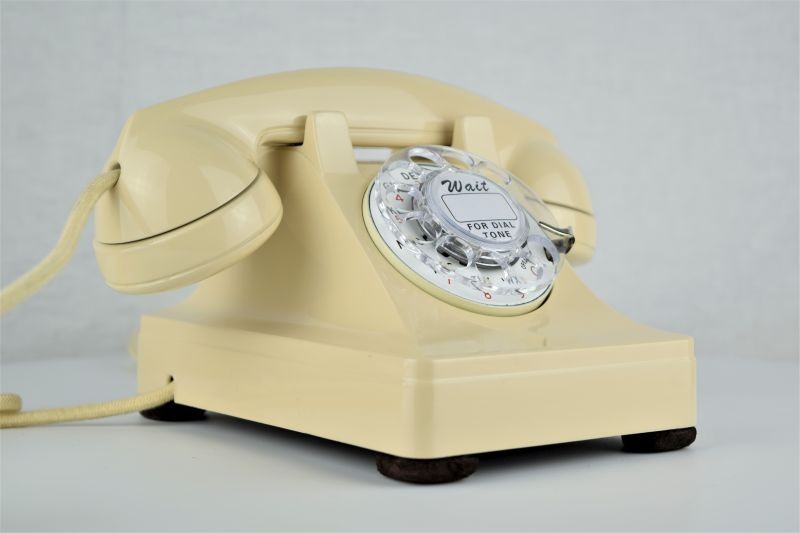

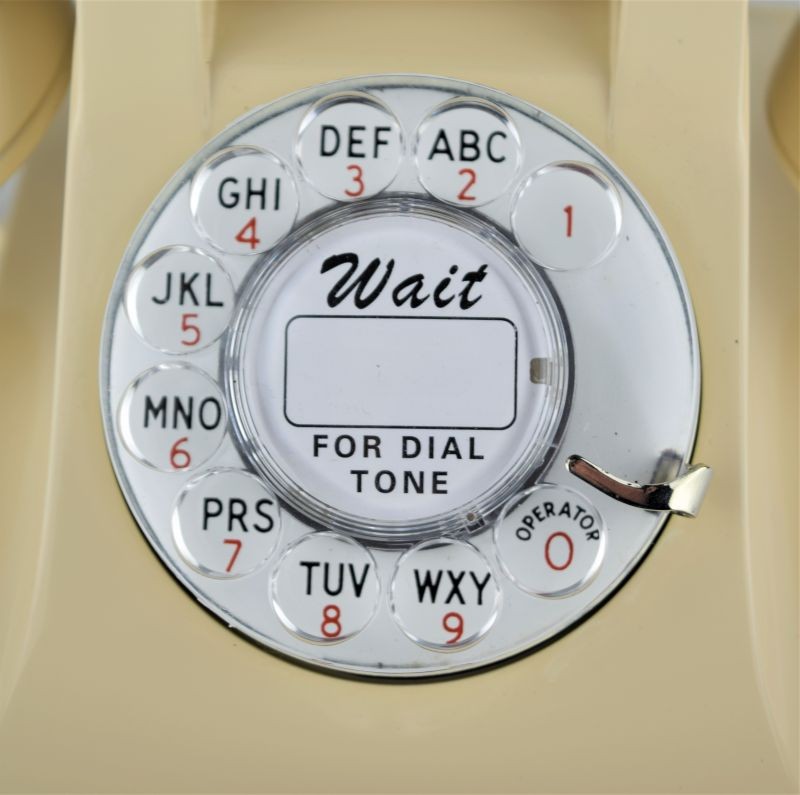
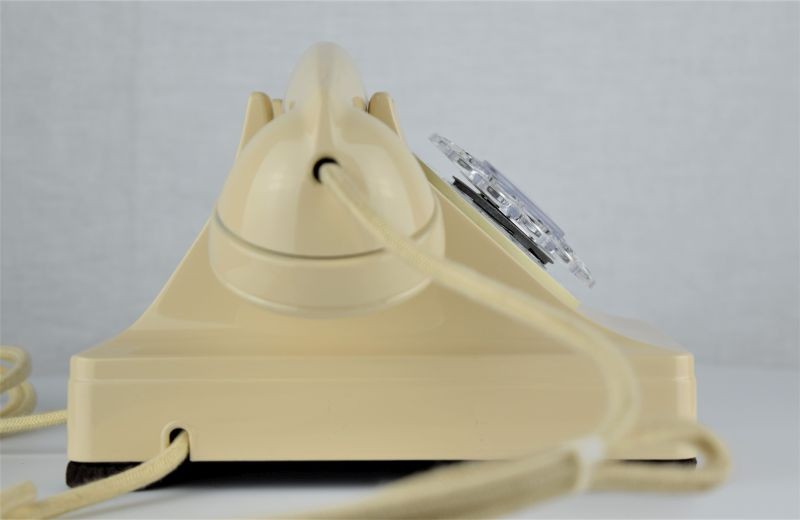
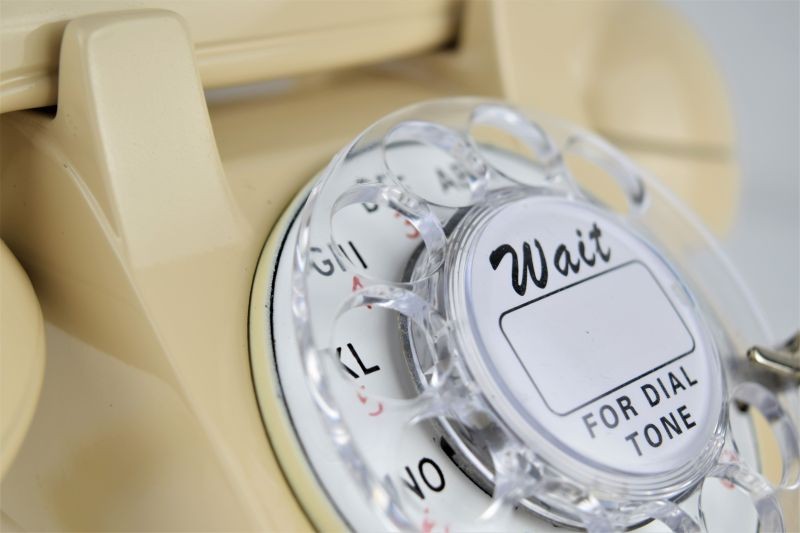
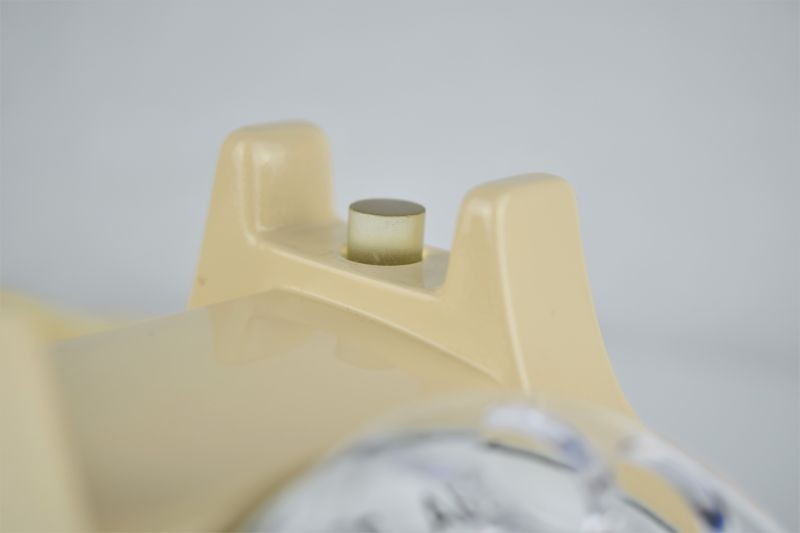
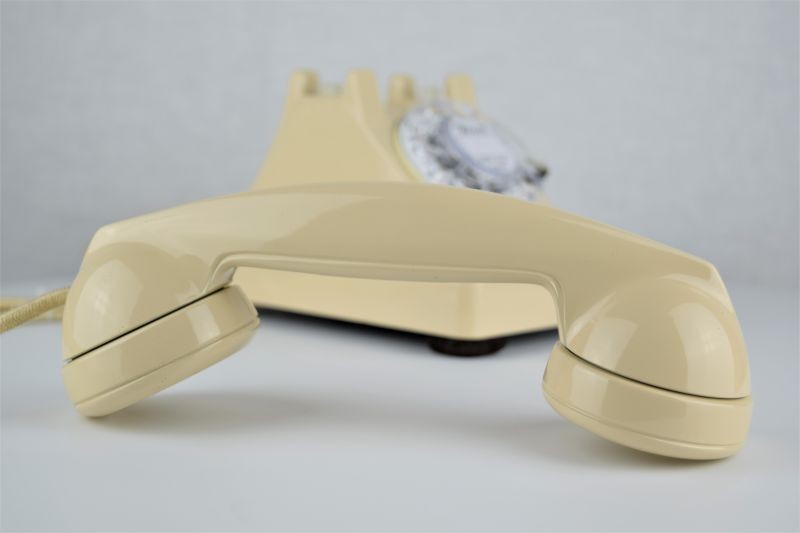
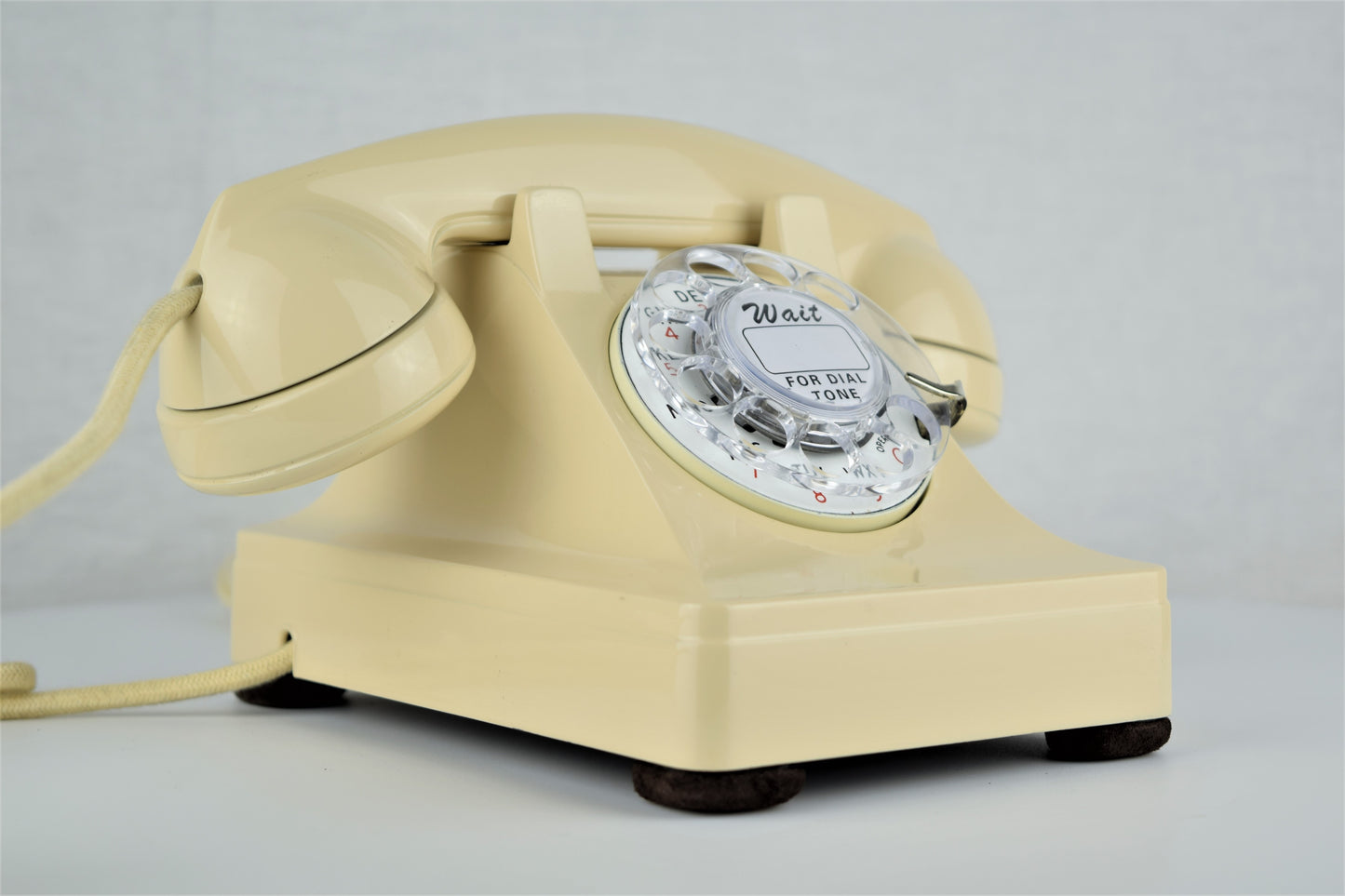
-
Shipping
Learn MoreWe ship Monday to Friday. Parts orders received before 9am will generally go out the same day.
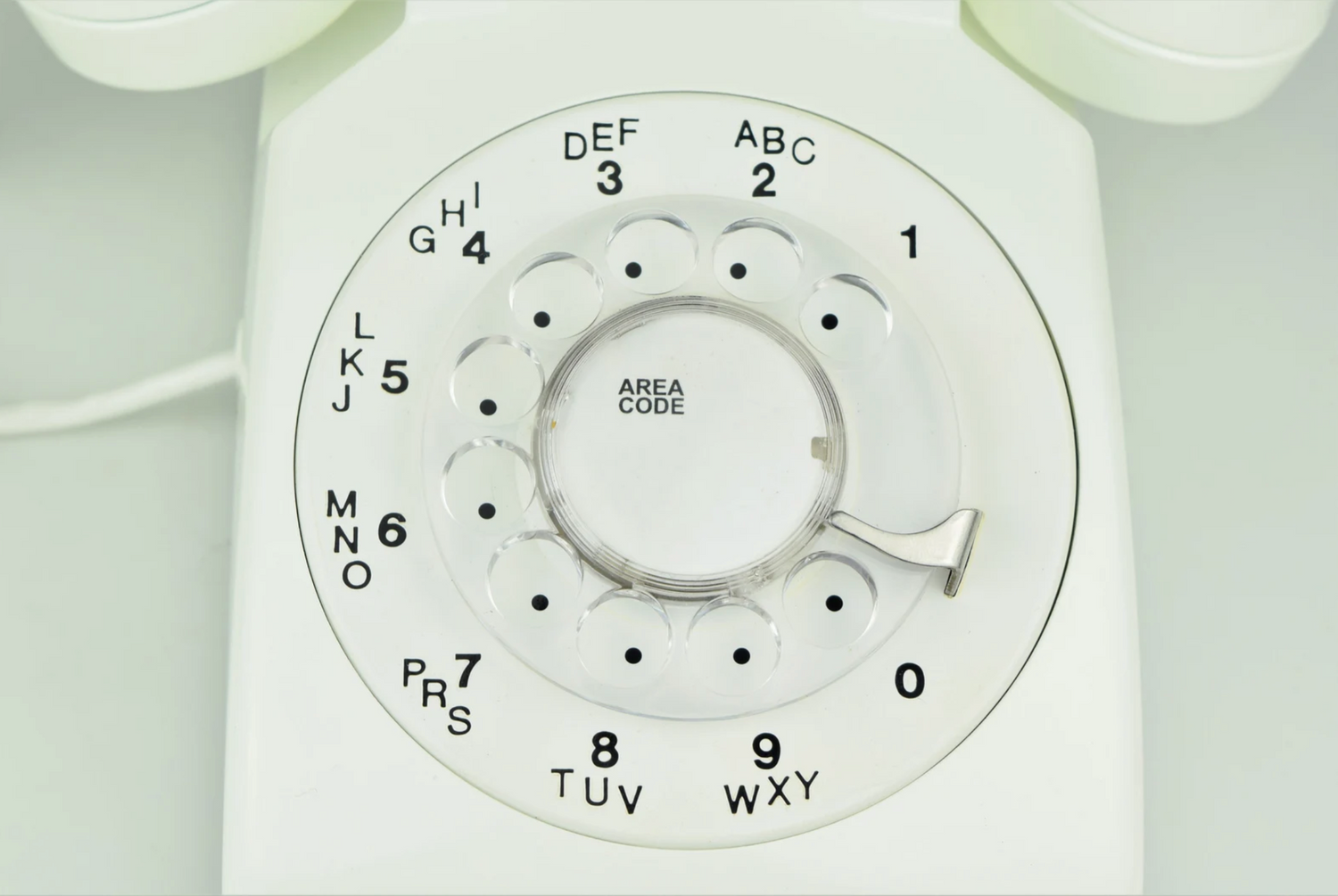
Hassle-free returns within 14 days of purchase.
Access our 90-day parts and labour warranty for manufacturing defects.

Shipping
We ship Monday to Friday. Parts orders received before 9am will generally go out the same day.
